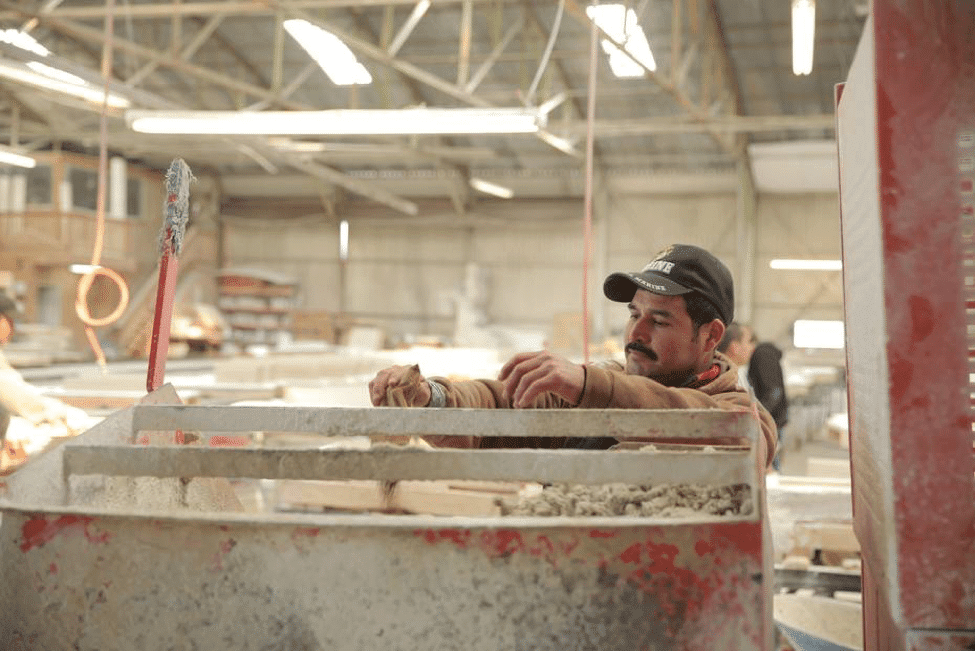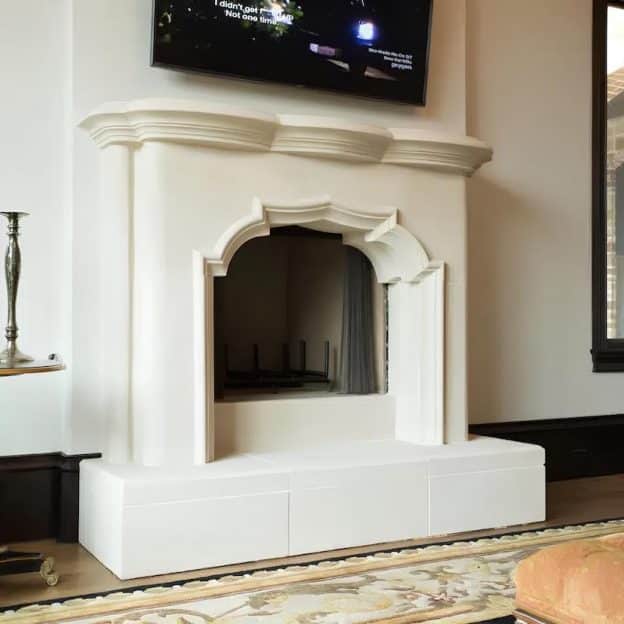At Old World Stoneworks, we make our beautiful mantels and range hoods from manmade stone modeled after Indiana limestone. Also known as Bedford limestone, this type of natural stone is the highest quality quarried limestone in America.
Sometimes, it’s very hard to tell cast stone from real limestone. Case in point: The Egyptian pyramids. For centuries, everybody assumed they were built with blocks of solid limestone. But scientists have recently begun to think the pyramids were built with an early form of concrete composed of limestone, lime, clay and water. Scientists analyzing the pyramids found that they had a higher water content and other traits more consistent with cast stone than naturally occurring stone. At Old World Stoneworks, we say, if cast stone was good enough for the ancient Egyptians – whose work has lasted 4,500 years – it’s good enough for our range hoods and mantels.

Today we’ll look at the difference between natural and manmade limestone, and the pros and cons of each.
What is limestone?
Limestone is found all over the world. It’s a type of sedimentary rock. That is, rock that’s formed when mud, sand and pebbles get cemented into layers, often in bodies of water. Limestone contains the minerals aragonite and calcite, and is composed of bony fragments of marine organisms. Its relatively uniform structure, texture and composition make it a good building material.
What is cast stone?
Cast stone is an imitation stone made of Portland cement, chemical admixtures and aggregates such as quartz, limestone, sand or granite.

Cast stone is easier to work with than natural stone.
Is precast concrete the same as cast stone?
No. Precast concrete is simply colored concrete and is usually associated with a wet poured method that helps to create the clean edges and dense stone. It’s a construction product created by casting concrete in a mold and curing it in a controlled environment, rather than pouring it at the construction site.
CAST STONE vs LIMESTONE: Pros and cons
At Old World Stoneworks, we’ll be the first to admit that humans can’t improve on the beauty of natural stone. However, there are times when natural stone is best for the job, and times when cast stone works better.
First, let’s look at natural stone. Each stone is unique. Colors, patterns and veining vary from stone to stone. It’s durable and low maintenance, but natural stone requires more skilled labor for shaping and installing pieces, and the cost can be high.
The uniqueness of each natural stone is both a pro and con. With cast stone, the designer can control factors such as which aggregates to use and which pigments to add to determine the color. This versatility is a big plus. Cast stone is easier to install than natural stone and usually costs significantly less.
Our cast stone production
At Old World Stoneworks, during our cast stone production process, we use a vibratory tamping method and make our cast stone by mixing a dry mixture of finely grated aggregates and silica sand with a bonding and hardening agent. In a mulling machine, we add this mixture to water. The result? A beautiful cast stone that’s as dense and durable as natural limestone.

We love to make our customers happy with a beautiful product for an affordable price. Are you ready to upgrade your mantel or range hood? Call us today. We know you’ll be satisfied with our cast stone products.

